10 packaging and branding trends every designer needs to know
Creative director Natalie Chung predicts which trends will make the biggest impact creatively, culturally and commercially.

Today's world is all about making connections. Packaging design as an immediate and physical point of connection and a communicator of the big idea is more relevant than ever, particularly now we have a greater abundance of choice – and competition – than ever before.
Overall, the design industry is rising to the challenges presented by this new landscape. Brands are definitely bolder and more forceful about where they belong in the marketplace and in consumers' lives.
They want to speak directly to people to foster a closer and more emotional relationship, and when it comes to packaging design, there is a definite move towards more bold, diverse, single-minded and confident designs that better reflect and communicate the brand purpose and belief.
Technology has been the biggest factor in changing the way we connect with brands and with each other, and brands across every sector have had to think about how they can express the constant change that reflects the impact of technology on our day-to-day lives.
This change is probably most evident in retail, where we can see brands being pushed to find new, creative ways to bring together the digital and physical worlds. More than ever, these brands need to secure – across all channels – a strong and immersive presence that seamlessly optimises new, intuitive and desirable design, starting with identity- centric packaging design.
True cultural insight enables us to understand the future, and how consumer needs will change
The real value afforded to design is changing too. Figures released by the government earlier this year confirmed that design is the UK's fastest growing creative sector and worth £3.2 billion to the UK economy annually.
The figures don't split out the worth per sector of the industry, but should help us push for brand and packaging design to be viewed in the same context, and with the same relevance and influence on society as fashion design, architecture and product design.
Design's impact on cultural change is increasingly important. The best designers are able to take inspiration from the world around them, navigate and make sense of the white noise to create something truly clear, original and future-focused.
Trends come and go in moments, but true cultural insight enables us to understand the future, and how consumer needs will change. As designers, we have the power to illustrate what that change will really mean and what it could look like for brands, products, services and society.
So what does the future of packaging design look like? Here are 10 key shifts that show the evolving role of packaging – I believe these will make the most impact creatively, culturally and commercially.
01. Increased personalisation
With society's increasing focus on lifestyle and making connections, we are seeing a huge shift in designing for the individual – but on a mass scale. Coca-Cola's name labelling was a revelation, but consumers are already looking for ways to take the personalisation concept further.
They are looking for new inspiration, new possibilities and new experiences to shape their own lives and, likewise, to interact with their chosen brands. For brands, engaging and collaborating with consumers in an increasingly equal relationship is the real challenge.
However, it also presents an exciting new opportunity to create the future with – not just for – consumers, with a highly desirable, individual design and product experience, plus a strong designer's aesthetic.
02. Decoding the hacking structure
Across all brand sectors, scientific breakthroughs are being translated into normal and everyday understanding. More specifically, we are seeing nature and tech continuing to converge to offer sophisticated options we never thought possible.
From the creation of running prostheses for amputees to the re-engineering of food sources, revolutionary innovation is set to rapidly change the way we live, function and interact with brands, products and services.
Branding and design will be crucial in making these new offers and radical innovations tangible and desirable. For example, high-tech food startup Hampton Creek creates imitation egg products (such as Just Mayo) by engineering new plant species to create healthier foods that use less land and water.
The beauty of the packaging design is it clearly shows the natural provenance, but also the difference, of the offer with a bold, simple icon showing a plant within an egg. It's a direct and pared-back approach, but still utterly foodie.
03. Natural shape-shifting
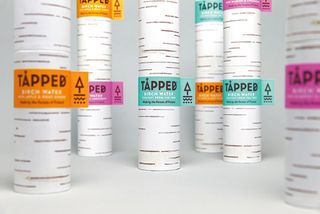
New concepts of structure, coupled with innovations in materials and technologies, are shifting consumer perceptions of the physical form, steering new directions for brands and culture as a whole as we inevitably move from the brand design we know today to the biomimicry of tomorrow.
New high-performance materials like graphene, which is super-strong, conductive and lightweight, will become the smart option and will signal the replacement of existing material choices.
Nanotech may mean we find ways to incorporate 'live' packaging options (particularly for food) that will scale down as the product is consumed, and provide innovative ways for us to transport, store and reuse materials, Multi-faceted or more flexible structures and delivery methods such as drones will become a reality or, at least, just one of a number of future considerations for packaging design that will need to work across multi-formats and multi-channels.
04. Scaling innovation
Brands still need to succeed within the mass market, but must increasingly address a moral, social, political and ethical agenda. Sustainability is paramount. Compressed aerosol formats have begun to address issues of portability and scaling, but we are looking for less standardisation in materials and structure, and more focus on smart, sustainable design thinking.
Brands should meet this new need through brand and packaging design, as it is challenging design that has the real potential to bring innovation to life. Coca-Cola's 2nd Lives caps kit, which was specifically designed for the Asian market, focuses on packaging structure, showing how plastic bottles can be transformed into useful items – from paintbrushes to pepper mills and pencil sharpeners.
05. Sharing stories
Brands need to refocus on how they create, share and help us experience their stories, making them relevant and original on both global and local levels. The UK's Drygate craft brewery celebrated its first anniversary with a small-batch birthday brew.
The brewery believes in open, fearless brewing to achieve the exceptional, and a spirit of collaboration. The bold, unique labels, created by up-and- coming artists from the Glasgow School of Art in Drygate's own community, are special and collectable in their own right and give beer enthusiasts the opportunity to open, and own, an exclusive brew.
The most memorable brand stories are those that develop an original narrative across everything they do, by engaging a new and distinctive visual and written story across all touchpoints – from location to packaging. In this way, the story is brought to life in a truly innovative and desirable way to create deep, lasting and emotionally resonant brand advocacy and connections.
06. Experiencing the moment
We want our products to offer a new sense of discovery and meaning through a brand experience that can be revisited time and time again. Creating an experience and a dynamic brand world within the brand architecture of the package itself – through the graphics, structure or copy – is more of a challenge, but this is where the true connection and brand buy-in lies.
Think of the simplicity and fluidity of the Tŷ Nant water bottle, or the coloured punt in Absolut Mandrin, which added an unexpected and witty twist to the iconic Absolut bottle – and made its orange tang tangible.
The drinks category has consistently pushed the boundaries here but, with an increasing desire for immersive brand experiences, all sectors will need to find unexpected and inspiring ways to dial up experience within their packaging design.
07. Craft
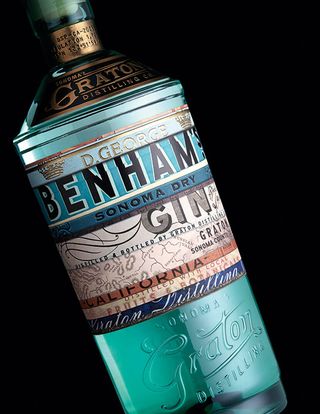
Hand-rendering is still very popular, showing the human touch through hand-crafted typography and illustration. We may be living in the age of the 3D printer, but old school craftsmanship is on the up, and traditional aesthetics and printing processes are being used to disguise mass production. Big brands are beginning to think with a small brand mindset – a behavioural shift that is now becoming a key driver, largely due to consumer overload and scepticism.
However, we now need to redefine and reinterpret what craft really means, and how it looks to a new and discerning audience. It's not about trying to provide a stamp of authenticity by just adding a 'craft' or 'handmade' label, but instead about creating new brand and visual expressions to forge a new level of connection. Ultimately, this will offer the essential difference that people are beginning to crave, which means new iterations of craft will become even more desirable.
08. Premiumisation
It's not about just understanding what premiumisation is, with its many different guises and tactics, but what it really means for the individual brand.
Premiumisation needs to be about using powerful creative thinking to identify and drive real difference, reach a more diverse audience and create new occasions for the brand by building new expressions of desire.
It comes down to adding value in the right way, and using design and creativity to drive difference, to create a future definition that is more than just about territory or culture, a price point or copycat offer. Carlsberg's limited edition Jacobsen Vintage trilogy isn't about being 'probably the most expensive beer in the world', but about truly pushing the boundaries of what we've come to expect from beer.
It also challenges the premium wine sector by showcasing Carlsberg's innovation and brewing capabilities with a bottle and graphic design to match. Each label is designed by a famous Danish artist or designer. It beautifully evokes the brand's story and heritage.
09. Online/ offline retail design
Brands need to further redefine their approach to match consumer
motivation, and embrace a more distinct split and design approach between online and offline purchases. By creating effective, desirable and inspirational design for impact both on-shelf and online, brands will better connect with their consumers and, in turn, connect with a more modal way of shopping in the future.
It's about how, with the right approach to brand space and an appreciation of the roles of brand packaging and design, brands can reinforce their ownership of both the aisles and the internet. Birds Eye's packaging redesign set out to achieve exactly this, with a clean and more defined logo, centred on the pack, to help promote both shelf stand-out and digital interaction.
10. Sustainability and second-use packaging
Sustainability should now be an integral part of packaging design – not
just an afterthought or add-on. Brands need to take bold steps to ensure highly impactful and inspiring executions that embrace ethical, educational and environmental considerations.
New effective, adaptable solutions to meet future needs and desires have to be a priority. Importantly, sustainable design doesn't have to look sustainable. Instead, our challenge is to express sustainability in a way that is truly desirable, enabling it to gain traction and allow it to change perceptions around sustainable aesthetics for both brands and consumers.
This isn't necessarily about creating future waste or yet more packaging to recycle, but clever, sustainably holistic and second-use solutions. We have already seen one or two great examples of second-life packaging coming through – such as Colgate's educational posters for schools – but second life, and particularly second use packaging, is now a key area of sustainability that needs creative champions.
The way in which we consume and connect with brands is changing rapidly. Packaging design needs to become more fluid, user-centred, empathetic and progressive. If we take the big idea, combine it with a future focus, and use packaging design to make it real, we will be able to meet these new cultural shifts in truly revolutionary and relevant ways.
Ultimately, this is how to create that all-important desire for brands now – and in the future.
This article was originally published in Computer Arts magazine issue 252. Buy it here.

Thank you for reading 5 articles this month* Join now for unlimited access
Enjoy your first month for just £1 / $1 / €1
*Read 5 free articles per month without a subscription

Join now for unlimited access
Try first month for just £1 / $1 / €1
Get the Creative Bloq Newsletter
Daily design news, reviews, how-tos and more, as picked by the editors.
Related articles
-
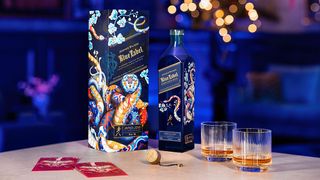
-
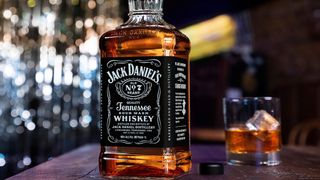
-
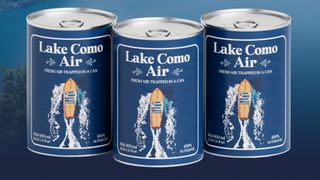
-

